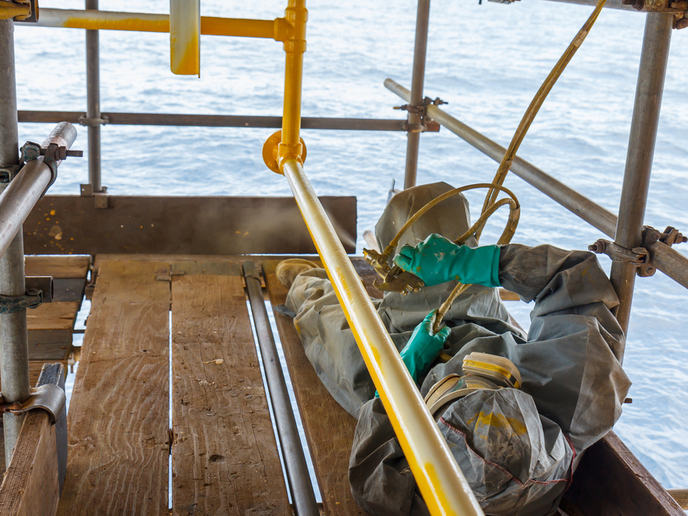Exploiting the potential of additive manufacturing with robotics
Mainstream media and popular business press often use narratives reflecting the anxiety that robots may render employees obsolete in various professions. But there are also some jobs that are hazardous for humans and these are better off in the hands of robots. Picture this: A robot climbing vertically an extremely slippery metal surface in a harsh offshore environment to apply coating against corrosion. The EU-funded 4D hybrid project has recently unveiled such technology. Now in its second year, 4D hybrid has developed an autonomous robot that can detect and repair metal vertical surfaces in offshore environments, according to a press release on the project website. “In order to do that, a 3D Scanner and a Cold Spray gun have been integrated on it. The 3D scanner implemented for the mobile platform is an Artec Space Spider commercial scanner able to reconstruct the surface and individuate the corrosion/defects on the metal surface.” The same press release notes that the cold spray system uses the 4D Hybrid module designed by the University of Applied Sciences and Arts of Southern Switzerland (SUPSI), the research and technical coordinator of the 4D hybrid project. The robot is able to go back and forth and can rotate even on its main axis, due to its design “as a tracked vehicle, equipped with two robust rubber belts, which keep contact with the surface, thanks to a powerful vacuum-based adhesion system, placed at … its centre.” The autonomous robot can be used to repair metal surfaces – corroded or not – with the presence of water and dirt, and with an outside temperature ranging between 3 °C and 35 °C. “4D Hybrid modules can be integrated in any sort of manufacturing equipment, thus avoiding major overhaul at industrial level.” Project partners believe 4D hybrid results could be useful for aerospace, oil and gas, and power generation industries. The project website highlights various case studies, such as repair of gas turbine blades, storage tanks and green field manufacturing of jet engine casings.
Additive and subtractive manufacturing
The ongoing 4D hybrid (Novel ALL-IN-ONE machines, robots and systems for affordable, worldwide and lifetime Distributed 3D hybrid manufacturing and repair operations) project that developed the robot is focused on developing a new concept of hybrid additive manufacturing (AM). This is “based on the modular integration of compact, low-cost modules including laser source, deposition head, sensors and control,” as noted on the project website. AM refers to a group of fabrication processes where 3D parts are constructed by adding layers of materials on point, line or planar surfaces. In addition to AM, the project aims to develop a new concept of computer numerically controlled machining. This is a subtractive method of manufacturing – the opposite of AM – that involves the removal of 3D parts of a material to form a final shape.
Women-led innovation
The team involved with the 4D hybrid project at SUPSI was awarded by the European Commission the overall Grand Prix of the Innovation Radar Prize 2019, as well as the prize for women-led innovations. The woman behind the innovation is Prof. Anna Valente, head of Automation, Robotics and Machines Lab at SUPSI’s Department of Innovative Technologies. The Lab designs and engineers robot and machine prototypes for AM technologies. For more information, please see: 4D hybrid project website
Countries
Italy



